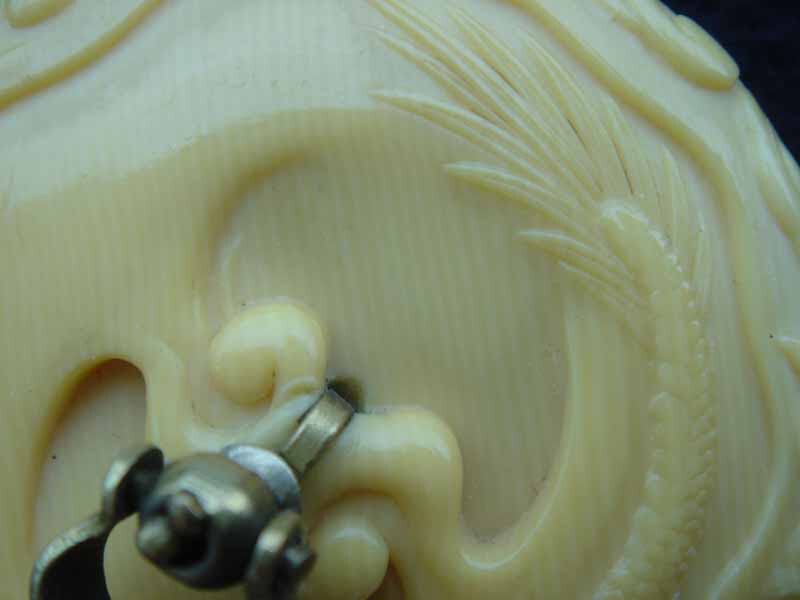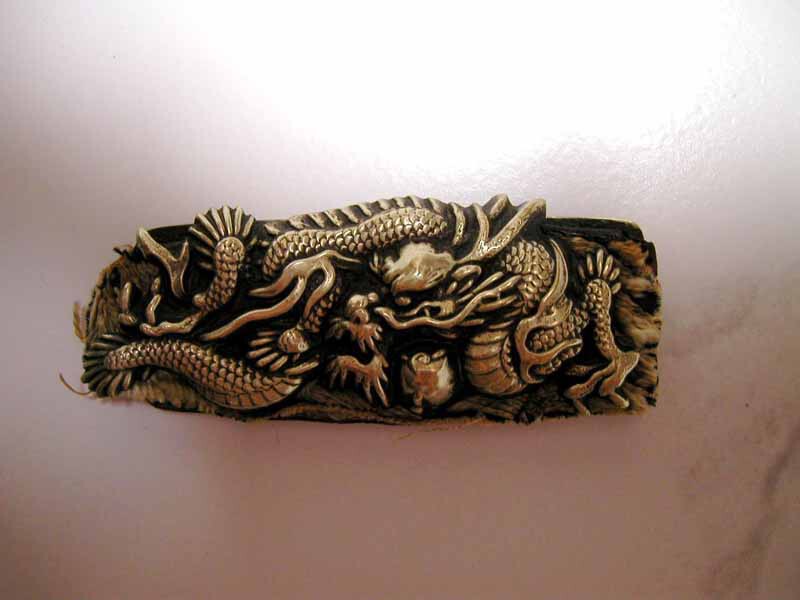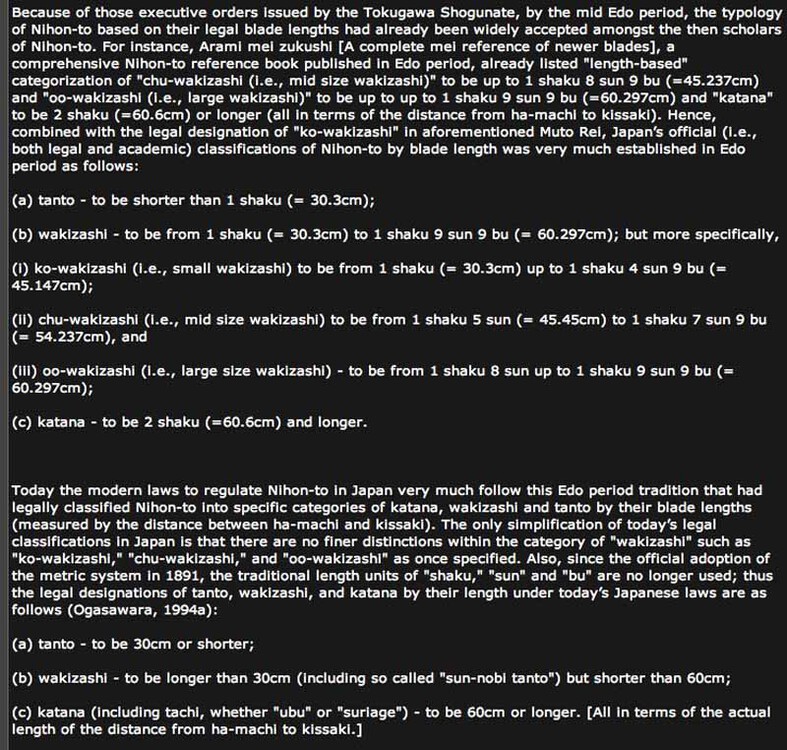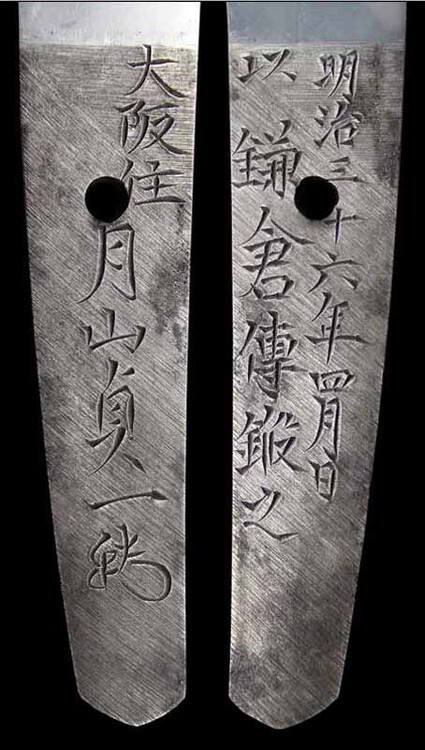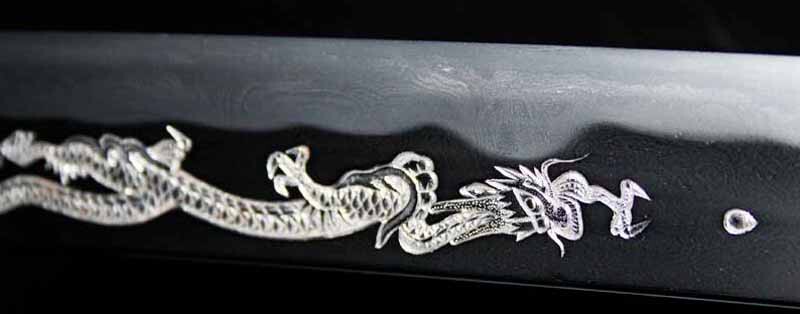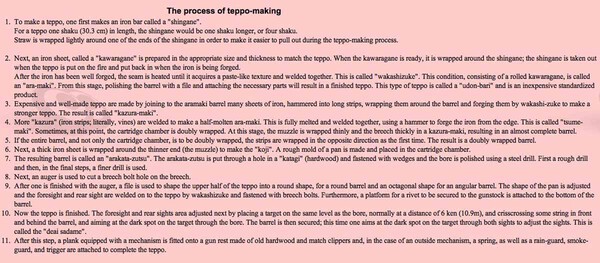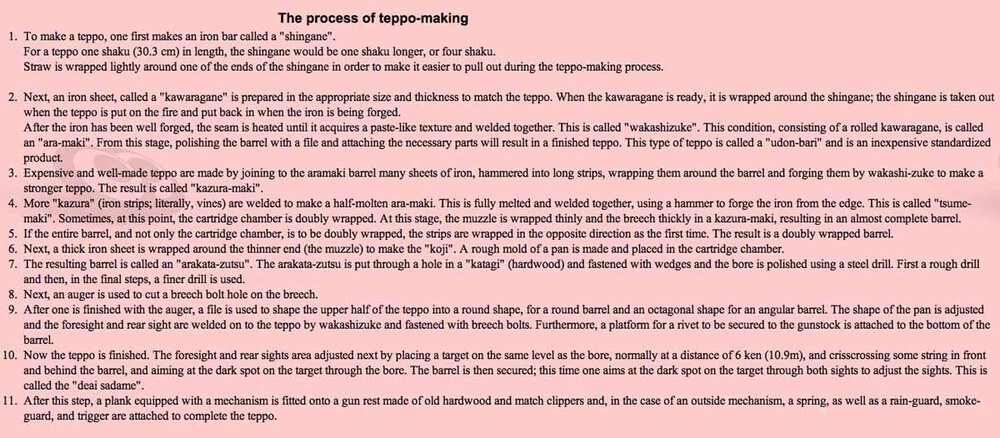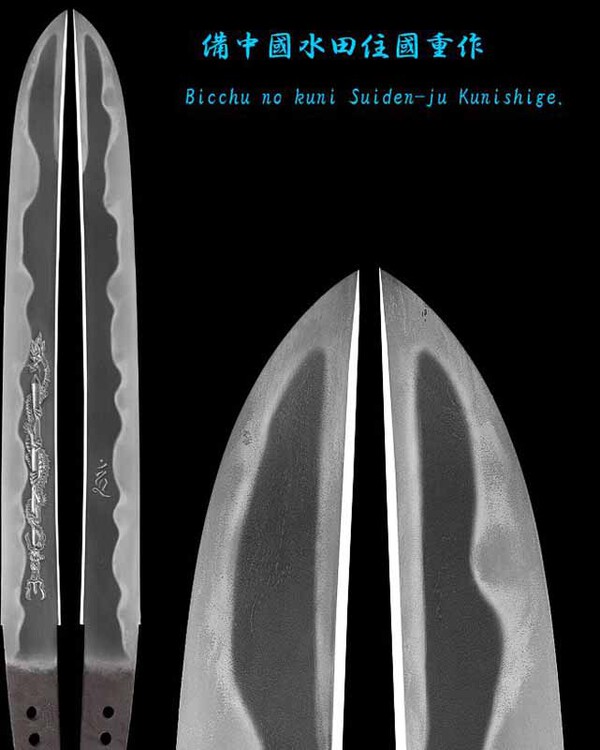-
Posts
1,029 -
Joined
-
Last visited
Everything posted by Eric H
-

The Kiseru and Tobacco in Japanese History
Eric H replied to watsonmil's topic in General Nihonto Related Discussion
Well, the use of BRD is per se not wrong but the correct mailing address is DE- (for Germany) Seit dem Ende des Kalten Krieges Ende des 20. Jahrhunderts und mit der deutschen Wiedervereinigung hat die Diskussion um die Abkürzung BRD ihre Brisanz verloren. So setzt der Duden seit den 1990er-Jahren „BRD“ mit „Bundesrepublik Deutschland“ gleich, während er zu Zeiten des Kalten Krieges noch darauf bestand, dass es sich um eine „nichtamtliche Abkürzung“ handelte. Seitdem verwendet zuweilen auch die dem Bundesinnenministerium unterstellte Bundeszentrale für politische Bildung auf ihren Webseiten und bei der Veröffentlichung wissenschaftlicher Publikationen die nicht unumstrittene Abkürzung BRD. Teilweise wird die Abkürzung auch in den Medien verwendet, z. B. in der Frankfurter Allgemeinen Zeitung,[19] in der Süddeutschen Zeitung[20] oder in der Welt,[21] auch wenn sie sich inzwischen auf das vereinte Deutschland bezieht. Eric -
Curran, I have forgotten to ask you on what criteria you believed the habaki 07 was crafted by a European. To my knowledge there is nobody capable to perform habaki on this level in Europe. Two other habaki from my collection 1 - Edo period 2 - late Edo period Eric
-
Curran The modern times habaki were all made by Japanese Craftsmen. Eric
-
Some different habaki from my collection. The quality and appearance of habaki goes usually with the quality of the sword. 01 - solid Silver - late Edo 04 - late Edo the others are modern times Eric
-

The Kiseru and Tobacco in Japanese History
Eric H replied to watsonmil's topic in General Nihonto Related Discussion
Actually Narwhal tusk is different from other kinds of ivory... screw like twisted. The grain is easily to see on the backside. This netsuke shows traces of abrasion along the border. It was believed that in its powdered form it would reduce fever. Eric -

The Kiseru and Tobacco in Japanese History
Eric H replied to watsonmil's topic in General Nihonto Related Discussion
an interesting read. from my collection the leavings of a tabakoire, a manju netsuke from narwal tooth and the appendant kanagu as also a tabakobon. a luxurious tabakobon just now at auction at Zeller, Lindau a.B., BRD, starting price € 1,800 Utamaro ukiyo-e Eric -
David, I have just read your article about Tosho Tsuba and I think it gives a good overview on the topic. Unfortunately the quality of the Newsletter paper does not allow satisfactory illustrations Eric
-
Suzuki Masao... not to be confused with Yamaura Masao. Eric
-

Hartman collection realized price list?
Eric H replied to rkg's topic in General Nihonto Related Discussion
Thanks for the lists of the estimates and the results. However the relatively low prices are deceiving, the gross income at that time was much deeper than nowadays. Eric -

Bizen-Osafune Sword Village trip
Eric H replied to Ken-Hawaii's topic in General Nihonto Related Discussion
An impressively documented report on the Bizen Osafune Sword Museum. Thank you Eric -

Hartman collection realized price list?
Eric H replied to rkg's topic in General Nihonto Related Discussion
The estimate price list is included in the catalog. We are interested to know the realized prices, for estimates and auction results can differ extensivly. Eric -
Son of Naotane: mei Matsuzaki Naomune Could you please post some pictures of the blade and the horimono. Thanks Eric
-
I agree...btw...one theory holds that he commited suicide in a similar situation of his master Kiyomaro. Eric
-
A Nihonto was primarily a weapon, which was carefully chosen by the Samurai taking in careful consideration his physical figure, strength and skill. The average height of Japanese men between 1602 and 1867 is estimated at only 5 feet 1 inch ( 152.39 cm). In this regard some examples of swords only few longer than katana size. Norishige - Juto - 62.2 cm Go Yoshihiro - Juto - 63.4 cm Soboro Sukehiro - ubu - 61.3 cm Sukenao - ubu - 62.1 cm Shodai Tadayoshi - ubu - 61.8 cm Suishinshi Masahide - ubu - 60.9 cm Suzuki Masao - ubu - 62.6 cm Koyama Munetsugu - ubu - 60 cm This Munetsugu was accompanied with the following text: Koyama Munetsugu with NBTHK Tokubetsu Hozon paper. This blade measures 23 9/16 inches or one shaku 9 sun 8bu or 60 cm. I am calling this a waki/katana. In the Japanese measurement we call 2 shaku a daito and 60 cm a daito but in Western style we call a blade of 24 inches a daito. No matter what this large construction would have been mounted as a daito. Very fine itame lamination work. Temper is choji. excellent condition. However, the NBTHK origami has classified this „daito“ as Wakizashi. There was an ignorant collector advising another not to buy a sword with a length under 70 cm. The sword in question was a bit over 2 shaku but by a very famous smith. The „connoisseur“ overlooked the quality and importance of the blade. A good point to think about. Excerpt from an article by member „Kiyomaro“. Eric
-
Manuel, A Katana by this Gassan Sadakazu is now up for auction at Aoi...compare...and make up your mind before spending a lot of money for polishing. https://www.aoi-art.com/auction/en/auct ... 1213703271 Eric
-
Sadakazu the First, born Yagoro in 1836 at Hikone in Koshu province, present Shiga pref. became an adopted son of Gassan Sadayoshi who was a swordsmith lived at Osaka. Sadakazu started to learn when he was eleven years old and mastered traditional ayasugi-hada of Gassan school as early as twenty years old. He continued forging after the Meiji Government administered a law to forbid wearing the sword in 1876 and was approved as a Teishitsu-gigeiin, a Craftman to the Imperial Household in 1906 and received a command to forge a gunto for the Emperor Meiji in the next year. Sadakazu passed away in 1918, aged 84. The First Sadakazu had been constant in his devotion to forge sword all his life. Everybody respected him for the nobility of his mind. His character appears on his works in every corner especially on their meticulous attended tang to the file pattern. That goes without saying about the excellent ability of forging sword, Sadakazu was preeminent not only in the carving but also cutting signature by free and easy stroke of tagane. Especially he is very skillful of Gassan hada an also he is good at Horimono. (Comment Aoi to Gassan Sadakazu) To underline what was said in the comment on yasurime, mei, and horimono, the pics of a wakizashi 33.5 cm. Eric
-
These are the best tools for gentle removal of tight handle. I have the same. http://www.ksky.ne.jp/~sumie99/tools.html Eric
-

Tanegashima Made Swords - Gendaito
Eric H replied to fatrat2's topic in Tanegashima / Teppo / Hinawajū
As has been said, teppo barrels were made from tamahagane. Tanegashiwa‘s forests guaranteed there would never be a shortage of charcoal for the tatara furnaces. It is said, that this Tanegashiwa steel was of the highest quality. There is no doubt, the Gendaito by Higo Tadayasu is a real Nihonto. Eric -
As has been said, teppo barrels were made from tamahagane. Tanegashiwa‘s forests guaranteed there would never be a shortage of charcoal for the tatara furnaces. It is said, that this Tanegashiwa steel was of the highest quality. There is no doubt, the Gendaito by Higo Tadayasu is a real Nihonto. Eric
-

Tanegashima Made Swords - Gendaito
Eric H replied to fatrat2's topic in Tanegashima / Teppo / Hinawajū
Indeed...these are valuable informations on Gendaito. Eric -
Indeed...these are valuable informations on Gendaito. Eric
-

Tanegashima Made Swords - Gendaito
Eric H replied to fatrat2's topic in Tanegashima / Teppo / Hinawajū
The process of teppo-making is quite challenging... ...what makes you to think that swords were made from teppo barrels? Eric -
The process of teppo-making is quite challenging... ...what makes you to think that swords were made from teppo barrels? Eric
-
Seems this can be translated or interpreted on two ways... Aoi comment to this smith: Suiden Kunishige was a skillfull swordsmith in Bicchu province. The founder of Kunishige was Tenbun era (around 1532), an he was called Tatsufusa. After him, Kunishige continued some generations until Genroku era (around 1688) Eric











